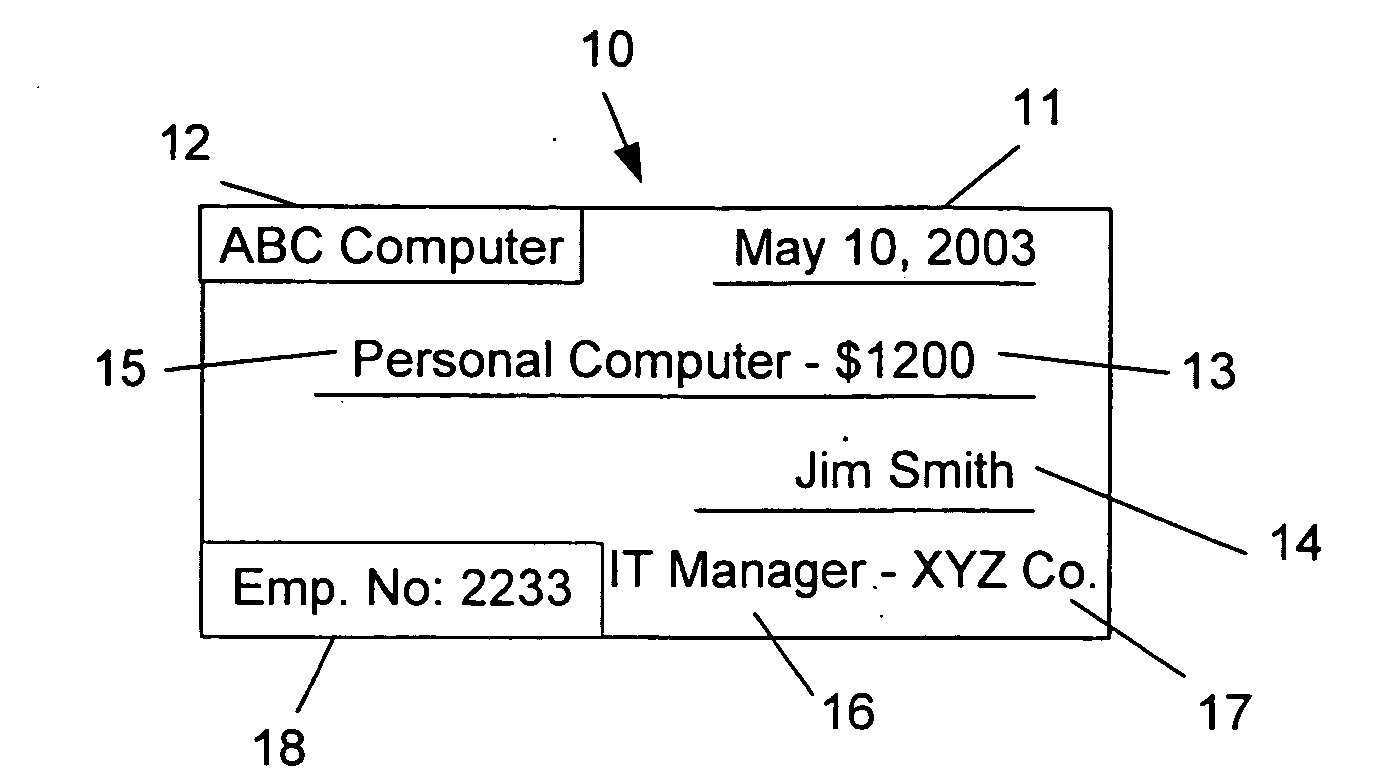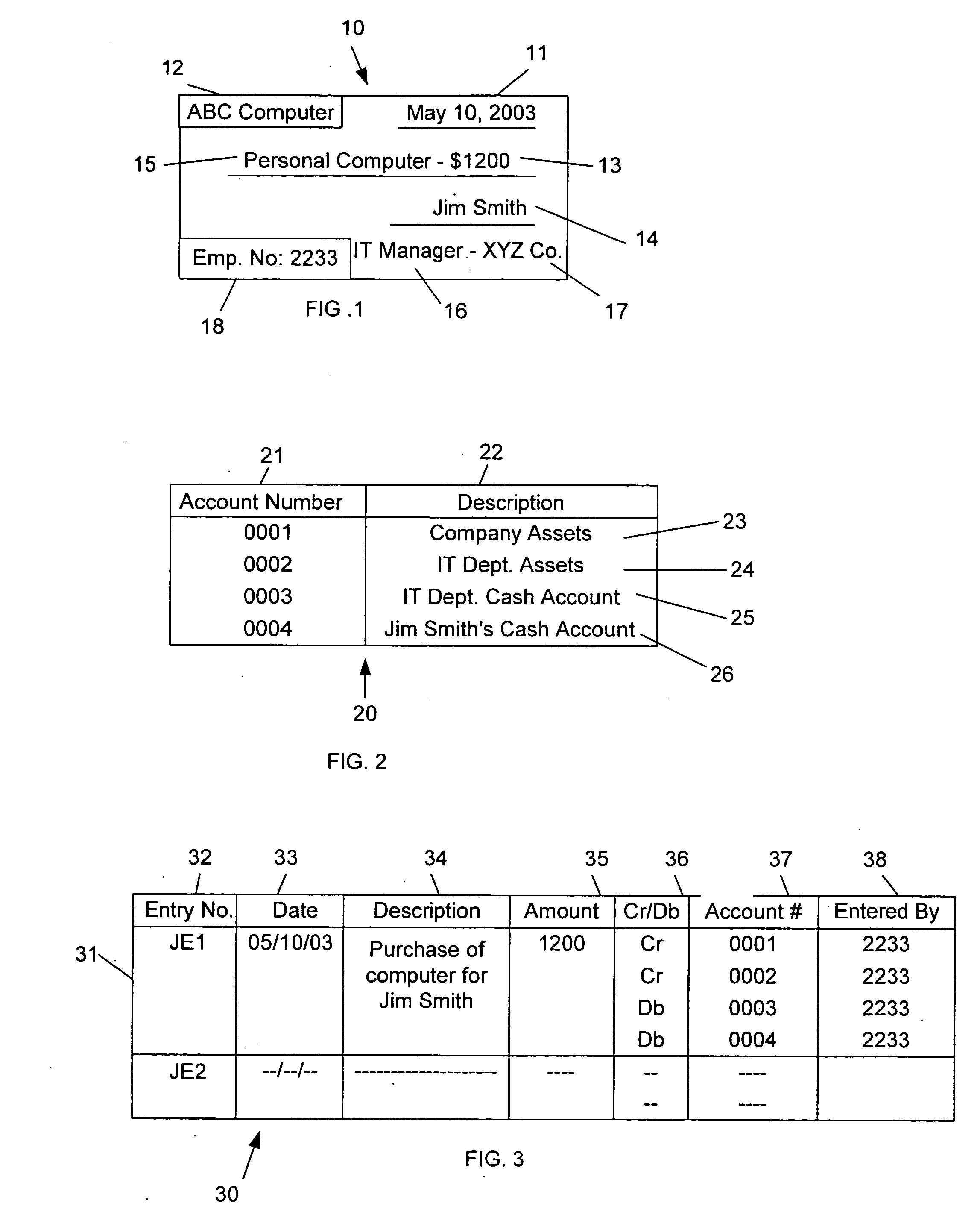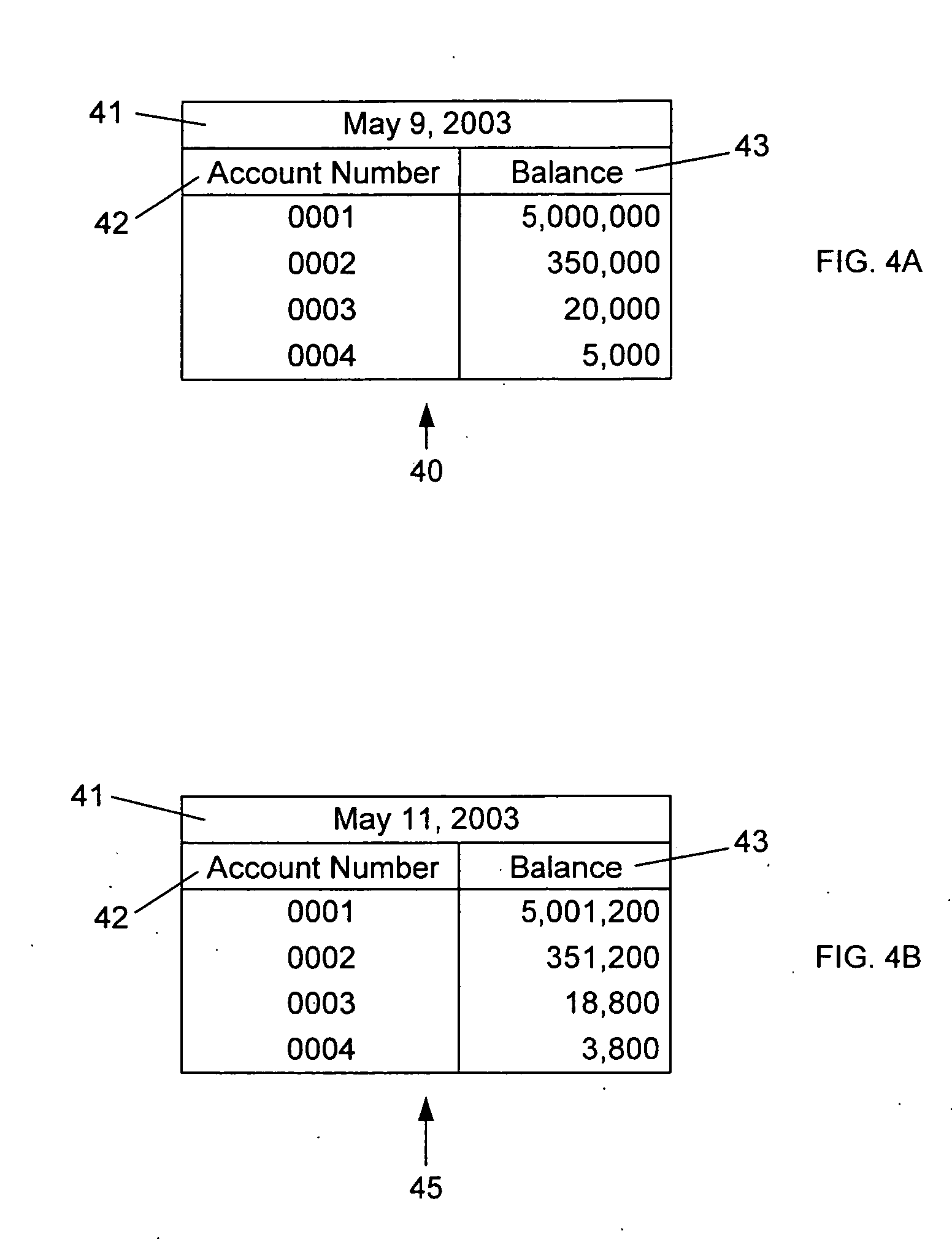Systems and methods for investigation of financial reporting information
a technology of financial reporting information and system and method, applied in the field of financial accounting and auditing, can solve the problems of limited application of such techniques, time and resource-intensive searches and investigations, and costly and time-consuming classic forensic investigation practices
- Summary
- Abstract
- Description
- Claims
- Application Information
AI Technical Summary
Benefits of technology
Problems solved by technology
Method used
Image
Examples
Embodiment Construction
[0035] The bookkeeping operations of a business entity or other enterprise revolve around the recording process, where the evidence of business transactions is recorded in a form that can ultimately be summarized and used by management, investors, regulators, shareholders, auditors, etc. When a business transaction occurs, some sort of evidence of the transaction is recorded. This may be a receipt, a purchase order, an e-mail, a cancelled check, a wire transfer record, or any other form of recording evidence of business transactions. The business transaction may be a transaction with an external entity, such as a supplier, vendor or customer, or it may be an internal transaction or adjustment, for example to ensure that revenue and expenses are recognized in the period they actually occurred, or to reflect a change in accounting practices, re-organization of a company's accounts, or for any other reason why a company may need to make internal transactions or adjustments to its books...
PUM
 Login to View More
Login to View More Abstract
Description
Claims
Application Information
 Login to View More
Login to View More - R&D
- Intellectual Property
- Life Sciences
- Materials
- Tech Scout
- Unparalleled Data Quality
- Higher Quality Content
- 60% Fewer Hallucinations
Browse by: Latest US Patents, China's latest patents, Technical Efficacy Thesaurus, Application Domain, Technology Topic, Popular Technical Reports.
© 2025 PatSnap. All rights reserved.Legal|Privacy policy|Modern Slavery Act Transparency Statement|Sitemap|About US| Contact US: help@patsnap.com



